Carl Auböck's masterpieces go on display in Vienna
The influence of the Carl Auböck Workshop on Austrian design is highlighted with a new exhibition at MAK, Vienna’s Museum of Applied Arts (until 13 October 2024)
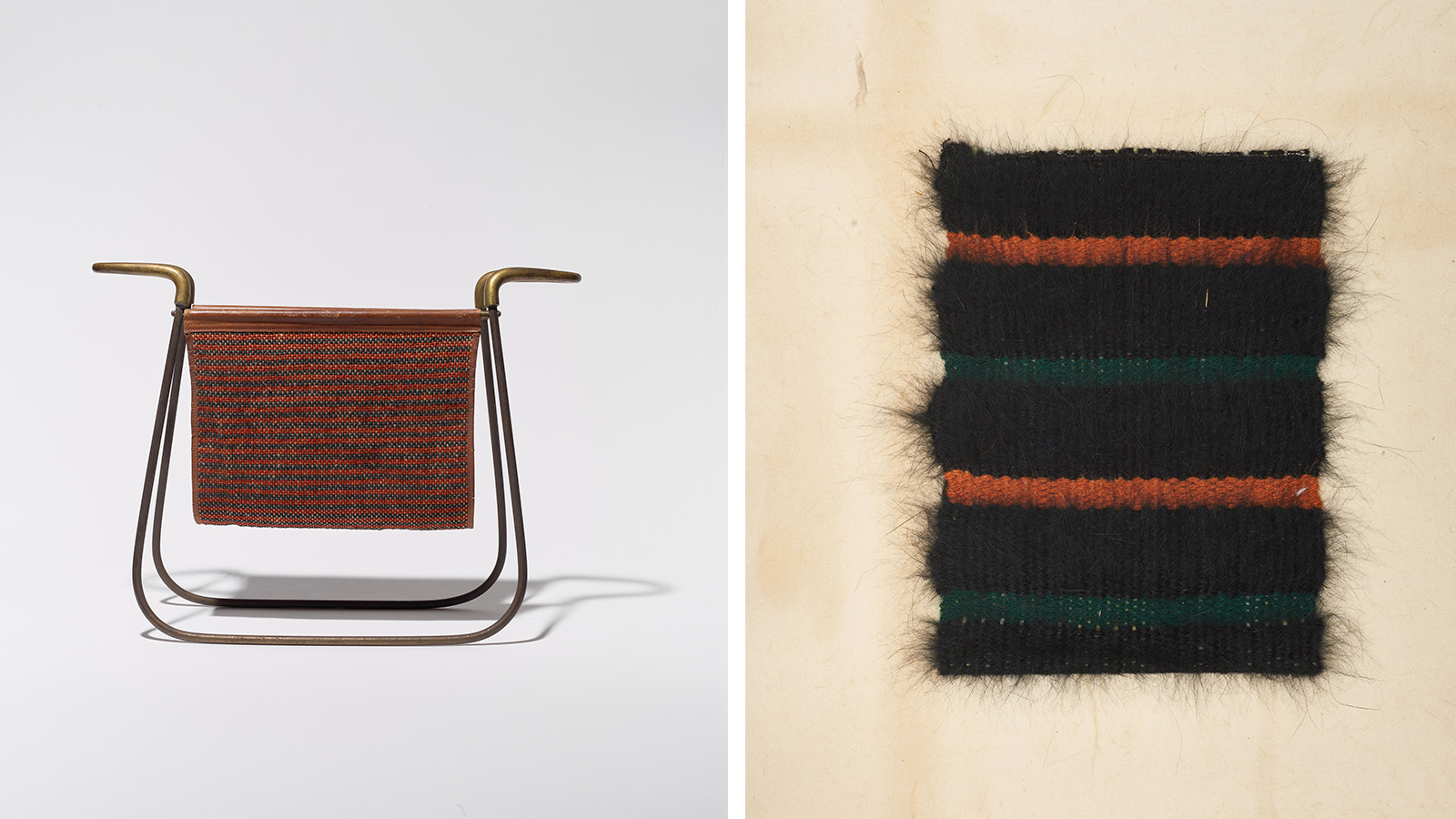
Right: Mara Uckunowa-Auböck, fabric design, 1930s© MAK/Georg Mayer
For over a century, the Auböck family has stood at the forefront of Austrian design, spearheading the Wiener Werkstätte movement and creating some highly collectable modernist designs, including brass candlesticks, elegant glass and leather carafes and hand-shaped paperweights. Now under the helm of the fourth generation of the family, the company is the focus of a new exhibition at MAK, Vienna’s Museum of Applied Arts, titled ‘Iconic Auböck: A Workshop Shapes Austria’s Concept of Design’ (until 13 October 2024).
‘Iconic Auböck: A Workshop Shapes Austria’s Concept of Design’
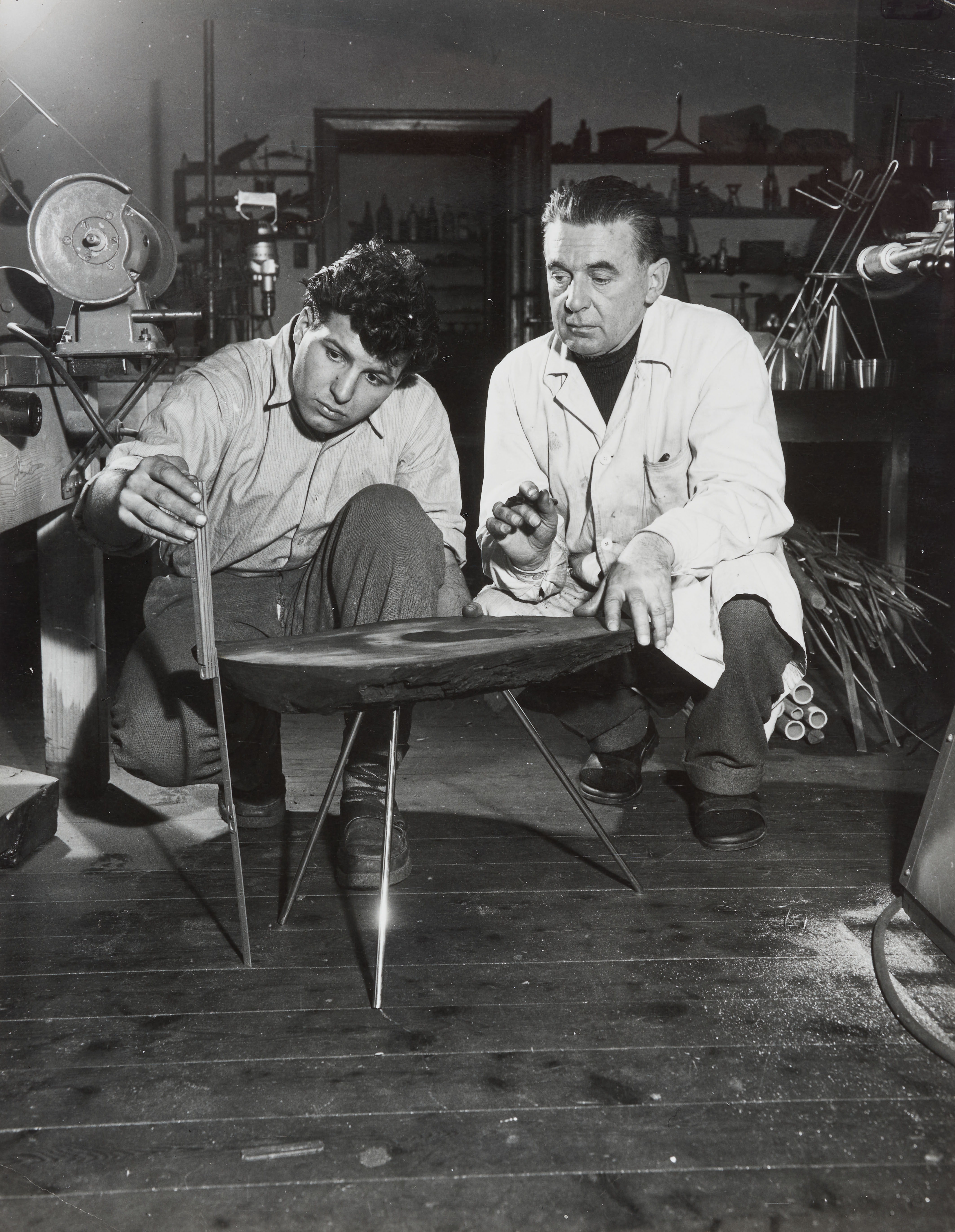
Carl Auböck II, tree table in the workshop, Bernardgasse, Vienna, ca. 1950 © Carl Auböck workshop
The handmade classics of the Carl Auböck workshop have influenced Austrian design since 1906, starting from the collectible animal statues of Karl Heinrich Auböck I, inspired by the turn-of-the-century craze from Vienna Bronzes. He was followed by Carl Auböck II, one of the first students to attend the Bauhaus; Carl Auböck III, an architect inspired by his studies at the Massachusetts Institute of Technology, and Carl Auböck IV, who today works from the exact same Viennese workshop, in the Bernardgasse of Vienna’s 7th District, as his forebears.
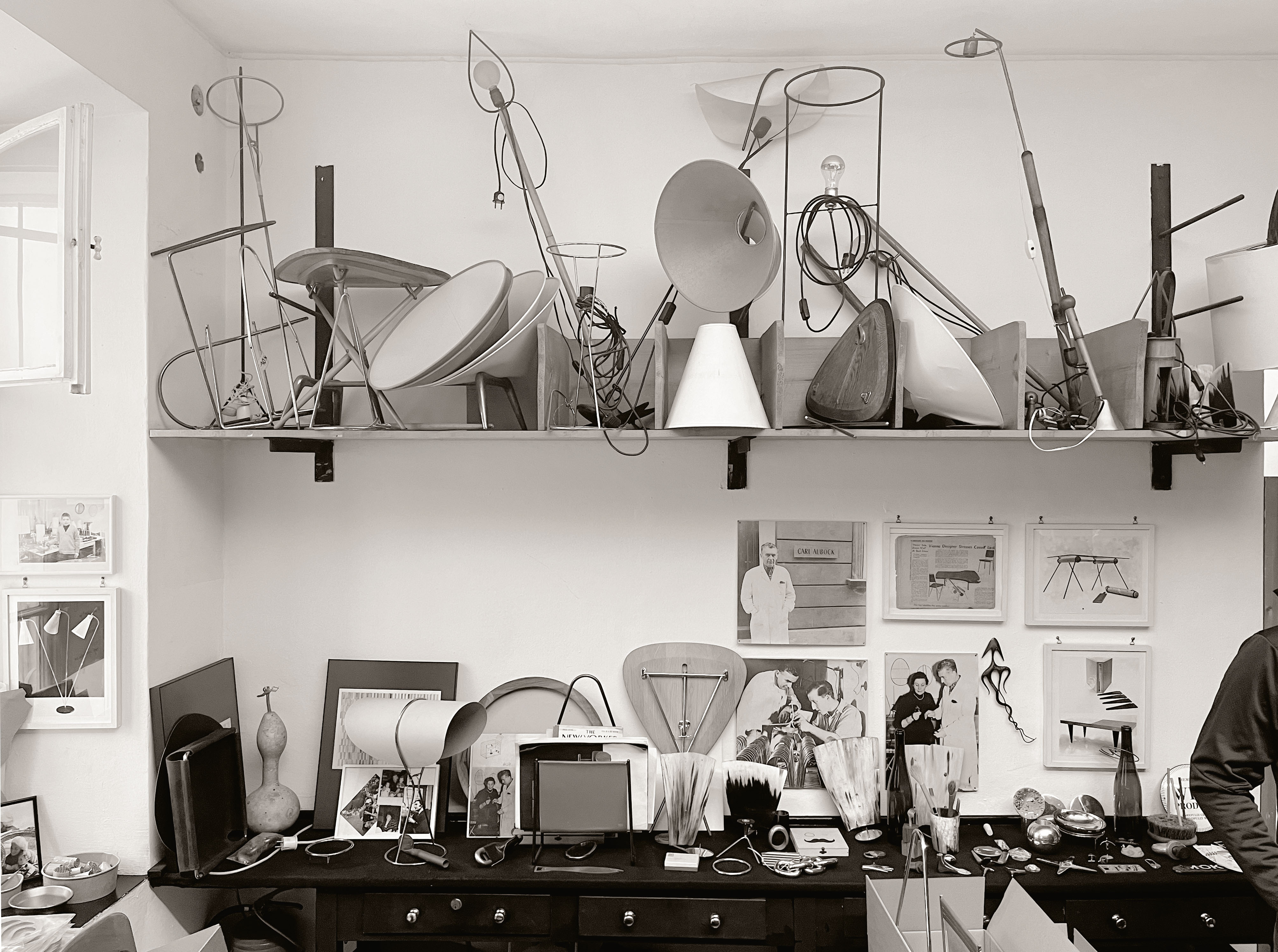
Paulus Dreibholz, Carl Auböck workshop, 2024 Courtesy Atelier Paulus Dreibholz
Featuring around 400 exhibits, including many unique items and prototypes, the MAK’s comprehensive show ‘explores the materiality of Auböck’s hugely diverse creations in brass, wood, horn, leather, and natural fibres’. It focuses mostly ‘on the workshop’s stylistically formative interwar and postwar years and on the experimental 1980s’, highlighting beautiful everyday items such as corkscrews, chess sets and clocks, most of which were designed by Carl Auböck II.
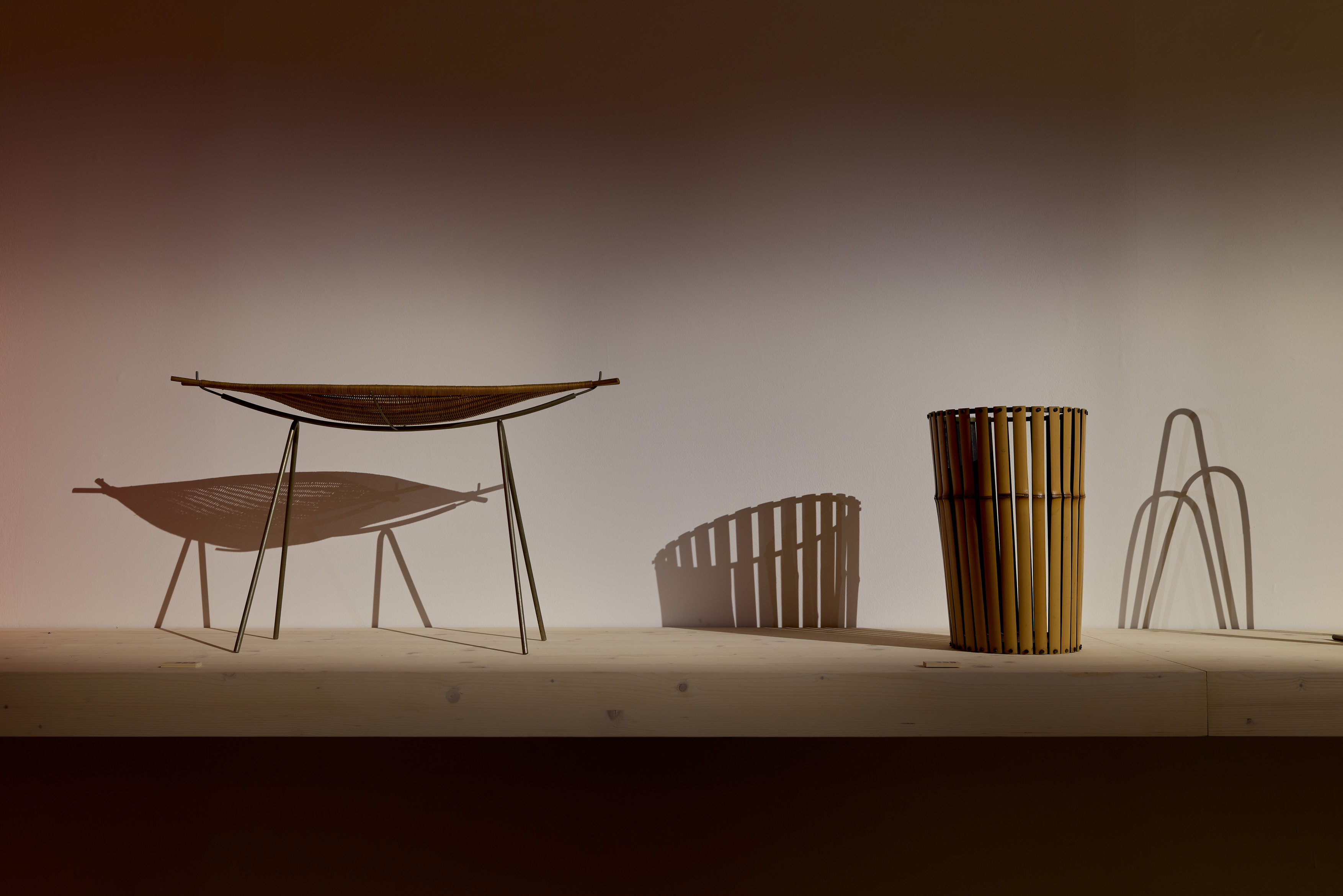
MAK Exhibition View, 2024 ICONIC AUBÖCK: A Workshop Shapes Austria’s Concept of Design Carl Auböck II, side basket, 1950, Carl Auböck archive Vienna; Carl Auböck II, umbrella stand, 1936, Loher collection Central Room MAK Design Lab © MAK/Christian Mendez
Auböck II, a Bauhaus student mentored by painter and art theoretician Johannes Itten, was interested in the form-giving qualities of line and movement, and the concept of the objet trouvé. His avant-garde creations often combine abstract and organic elements with a touch of surrealism, with his set of paperweights (a miniature hand, foot, and egg – an homage to Constantin Brâncuși) taking pride of place on the writing desk of none other than the Bauhaus’ Walter Gropius.
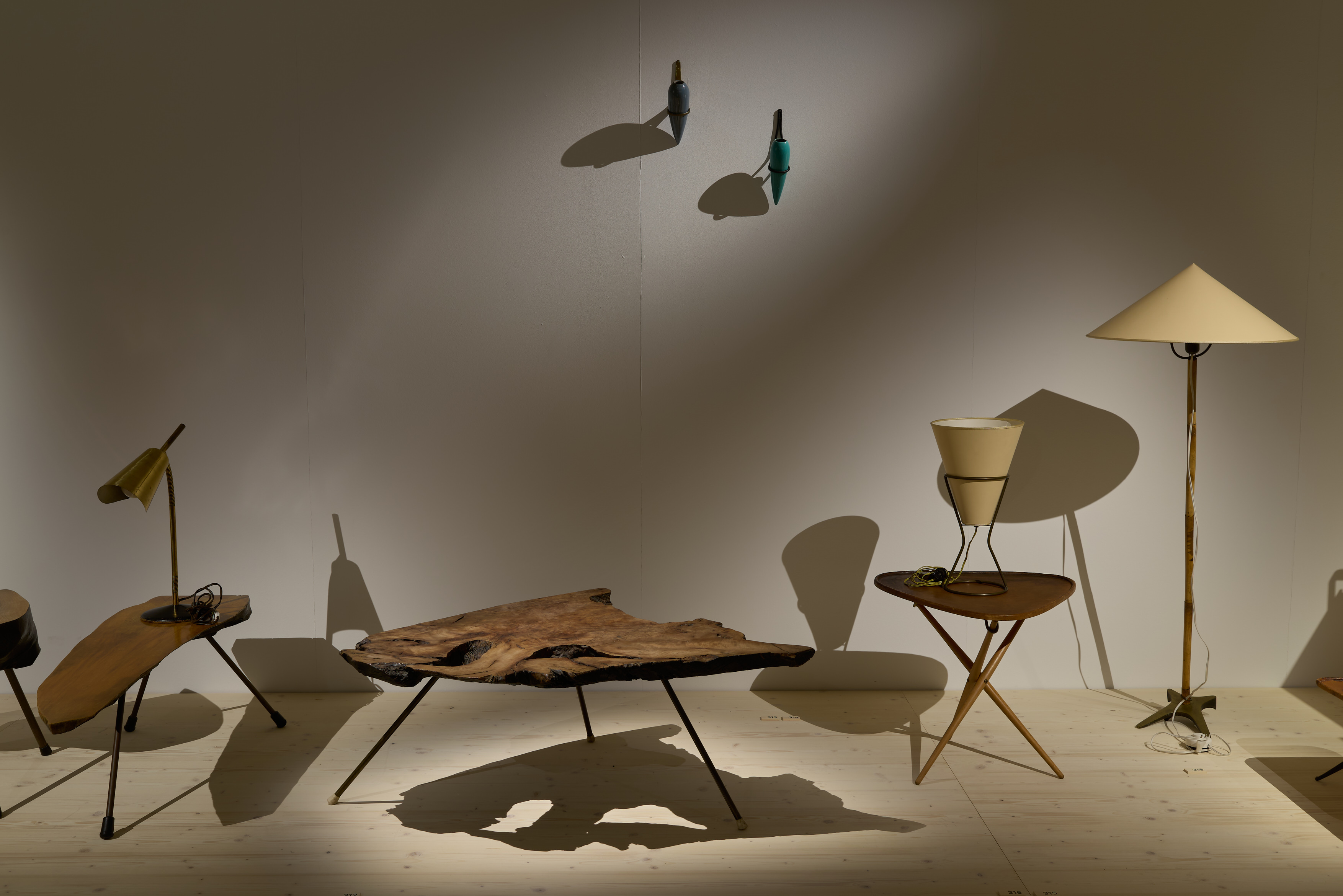
MAK Exhibition View, 2024 ICONIC AUBÖCK: A Workshop Shapes Austria’s Concept of Design Central Room MAK Design Lab © MAK/Christian Mendez
Curated by Bärbel Vischer and including a selection of exceptional standing and table lamps from the 1950s, the MAK exhibition explores this surrealist slant, highlighting Auböck II’s taste for ‘irreconcilable combinations, abstract compositions, and visual jokes’ that ‘often hide – in a tongue-in-cheek way – their real purpose from both observer and user’.
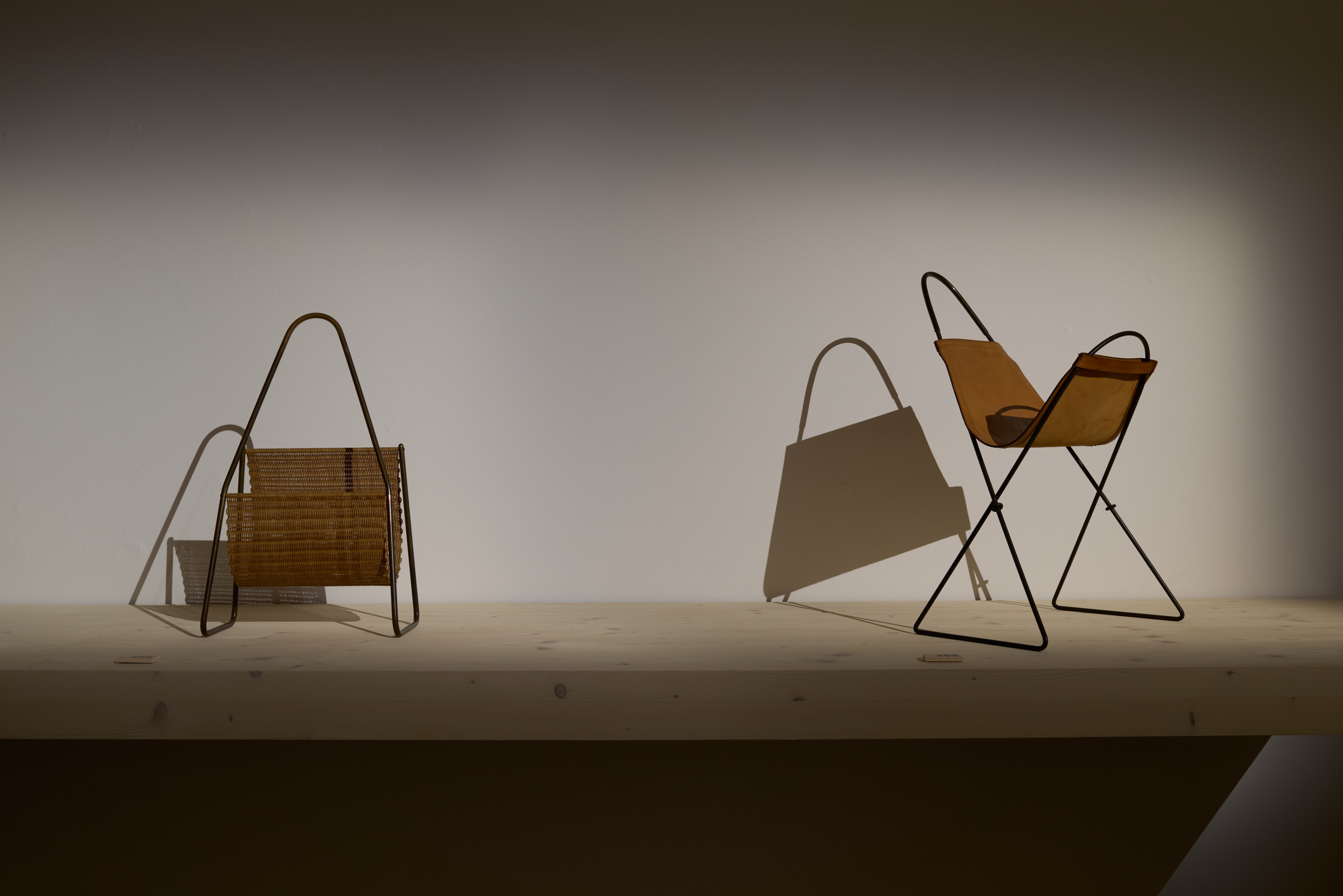
MAK Exhibition View, 2024 ICONIC AUBÖCK: A Workshop Shapes Austria’s Concept of Design Carl Auböck II, magazine rack, 1950, Loher collection; Carl Auböck II, magazine rack, 1951, Carl Auböck archive Vienna Central Room MAK Design Lab © MAK/Christian Mendez
The MAK also presents for the first time works by Carl Auböck II’s wife, the sculptor and textile artist Mara Uckunowa, whom he met at the Bauhaus. Influenced by the works of Itten and Josef Albers, her abstract fabric designs from the 1940s boast remarkable textures and colours.
‘Iconic Auböck: A Workshop Shapes Austria’s Concept of Design’ is on view until 13 October 2024
Receive our daily digest of inspiration, escapism and design stories from around the world direct to your inbox.
MAK
Stubenring 5
1010 Vienna
Austria
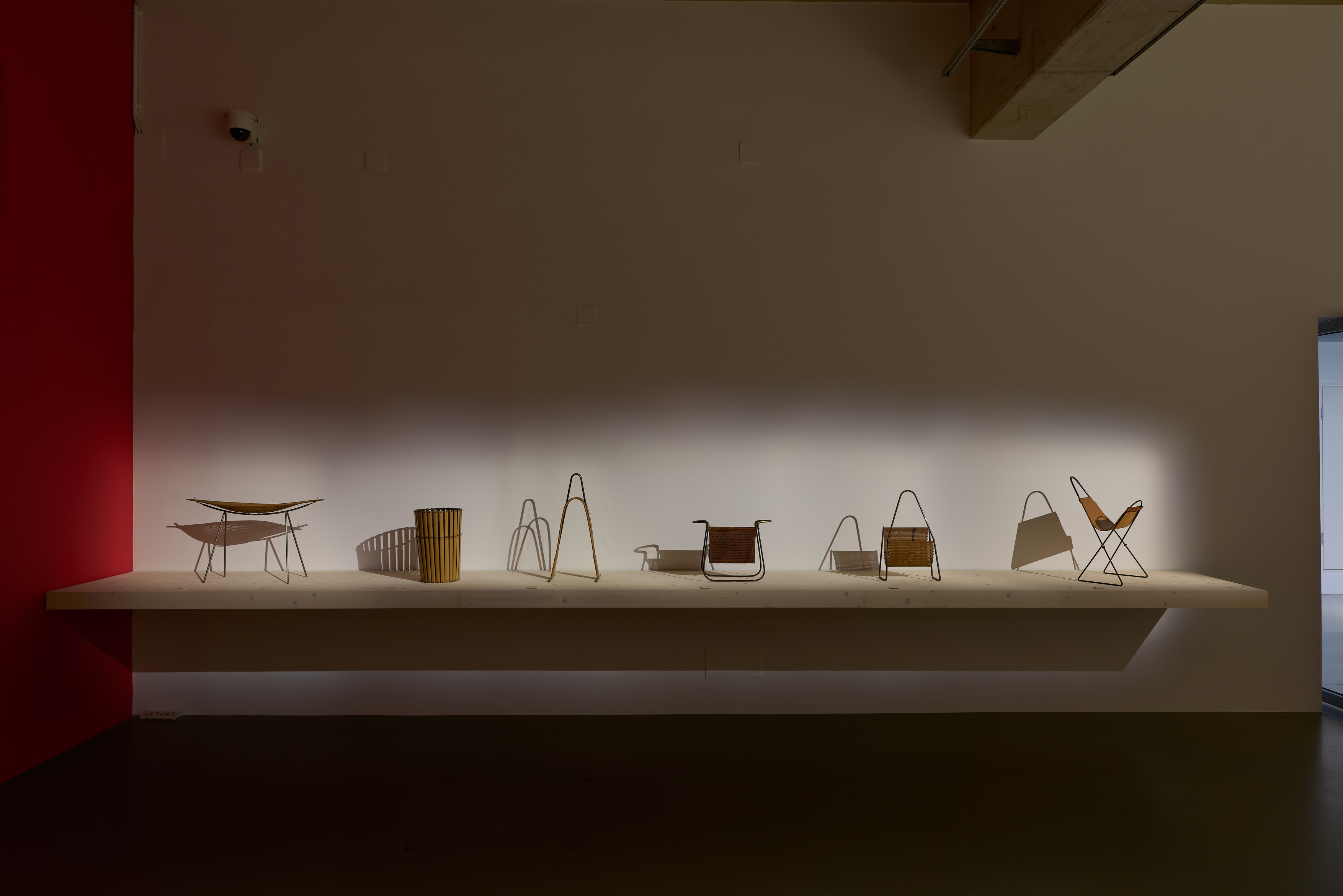
MAK Exhibition View, 2024 ICONIC AUBÖCK: A Workshop Shapes Austria’s Concept of Design Central Room MAK Design Lab © MAK/Christian Mendez
Léa Teuscher is a Sub-Editor at Wallpaper*. A former travel writer and production editor, she joined the magazine over a decade ago, and has been sprucing up copy and attempting to write clever headlines ever since. Having spent her childhood hopping between continents and cultures, she’s a fan of all things travel, art and architecture. She has written three Wallpaper* City Guides on Geneva, Strasbourg and Basel.
-
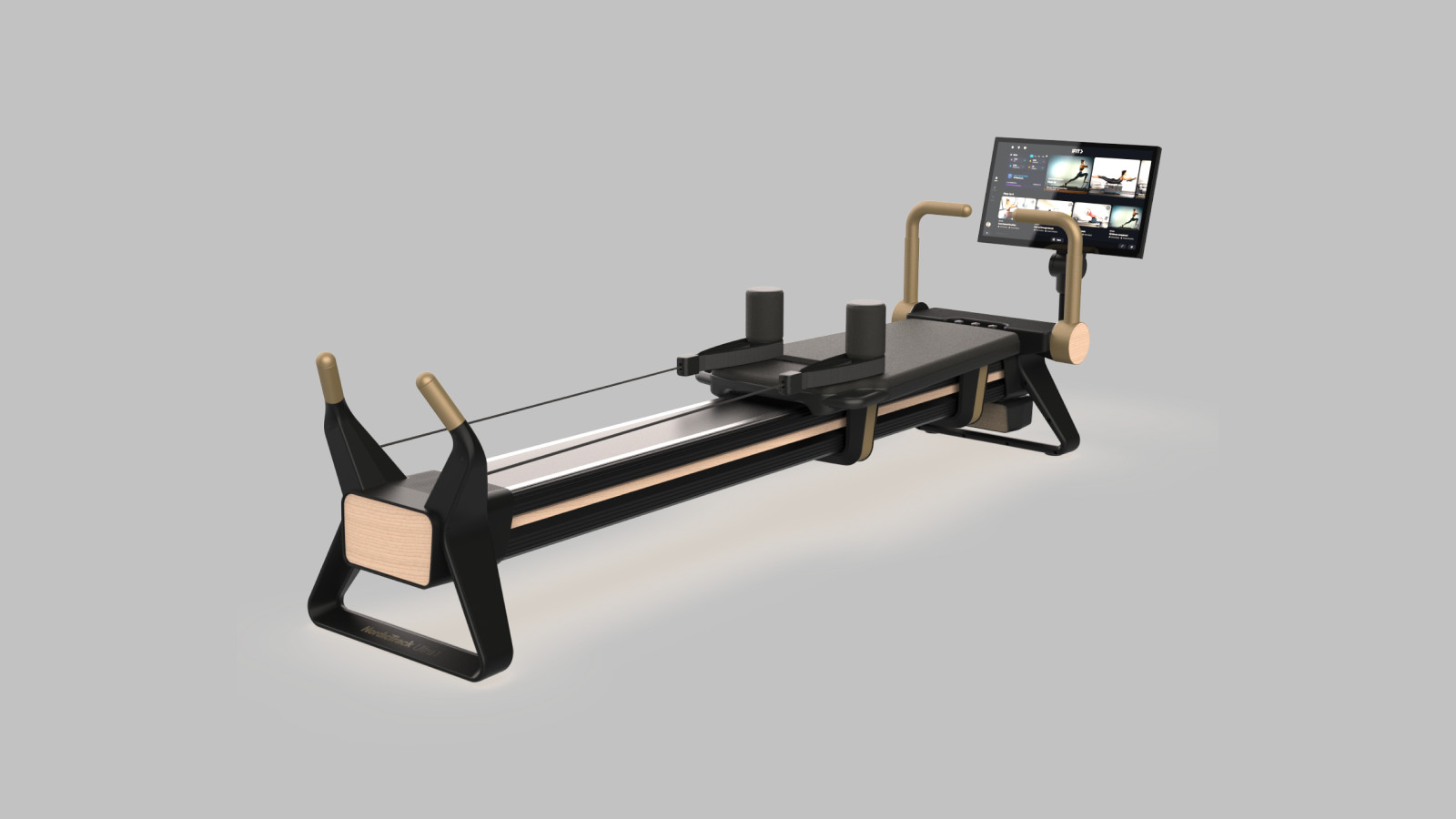 The NordicTrack Ultra Reformer Series brings Pilates into the iFIT home ecosystem
The NordicTrack Ultra Reformer Series brings Pilates into the iFIT home ecosystemiFIT brings the Pilates studio experience into the home environment with the new NordicTrack Ultra Reformer Series
-
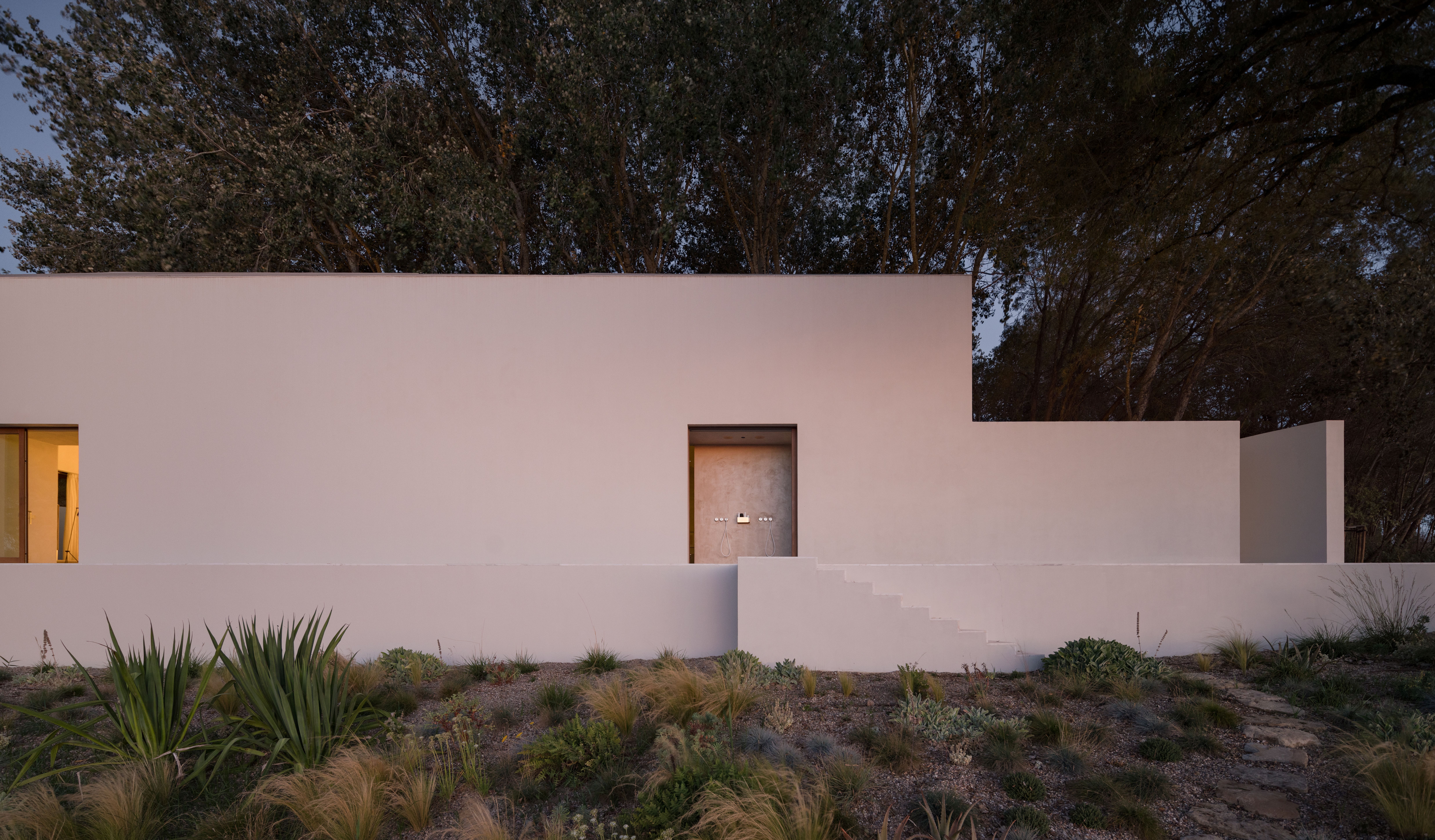 Soothing and symmetrical, this Portuguese house is a minimalist haven for two musicians
Soothing and symmetrical, this Portuguese house is a minimalist haven for two musiciansA Portuguese house near Lisbon, built on the ruins of an old winery, Quinta do Álamo by Atelier Matteo Arnone has symmetry at its heart
-
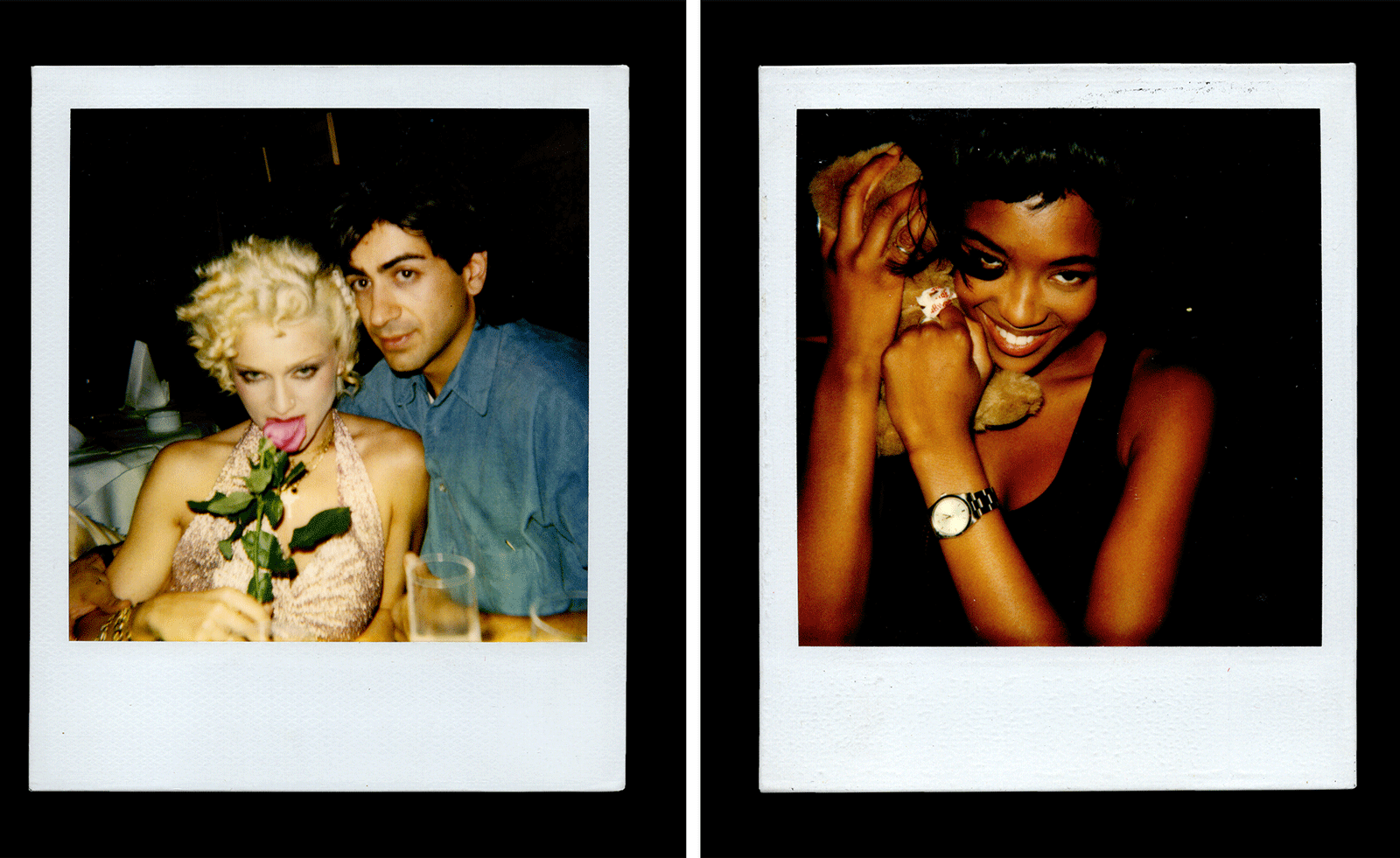 Inside Davé, Polaroids from a little-known Paris hotspot where the A-list played
Inside Davé, Polaroids from a little-known Paris hotspot where the A-list playedChinese restaurant Davé drew in A-list celebrities for three decades. What happened behind closed doors? A new book of Polaroids looks back
-
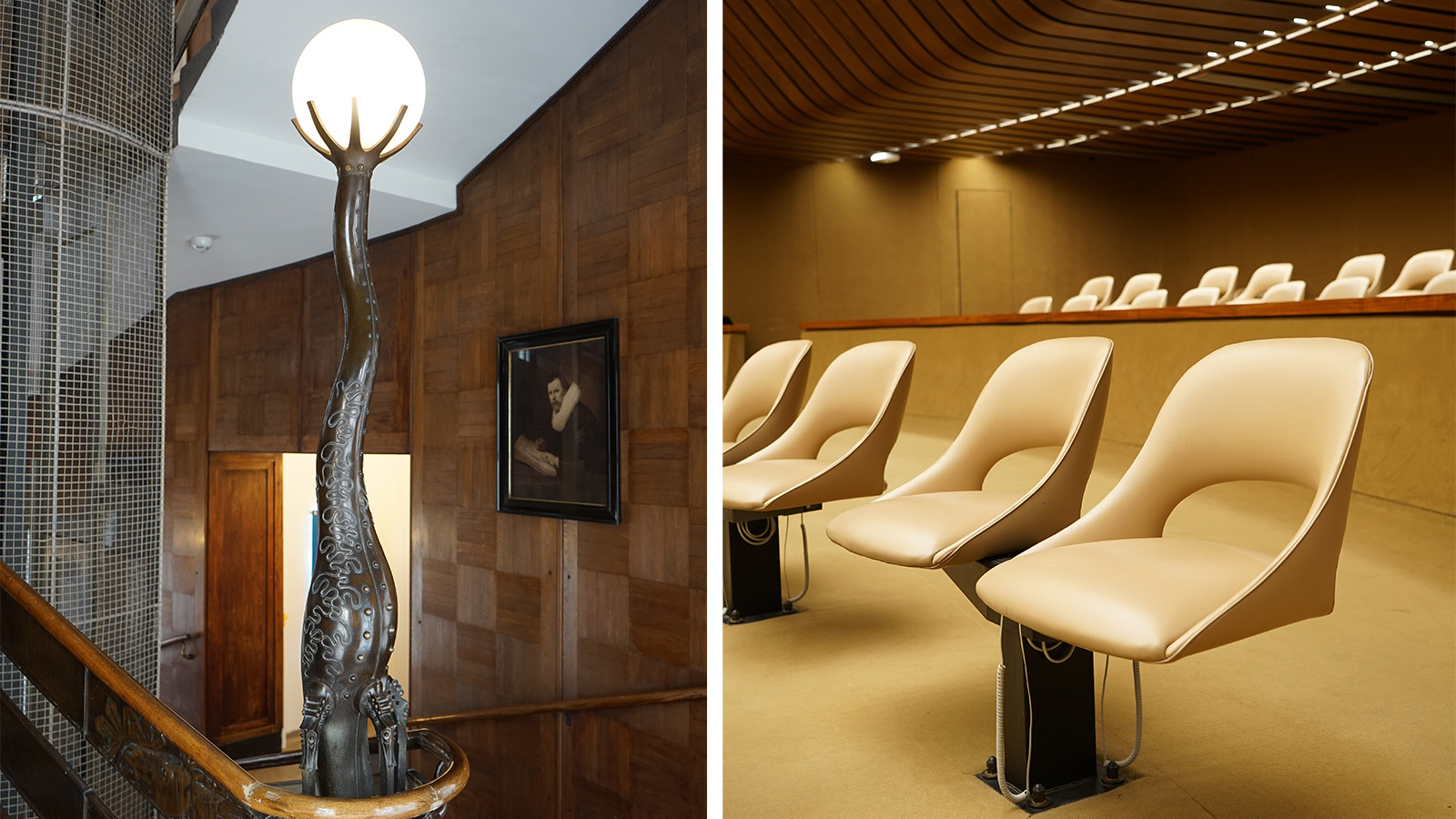 ‘It was a golden age of design’: Adam Štěch on modernism’s enduring allure
‘It was a golden age of design’: Adam Štěch on modernism’s enduring allureCzech architectural historian Adam Štěch, whose travelling ‘Elements’ exhibition is at MAK Vienna, on his odyssey to document the world’s modernist marvels, and what's next
-
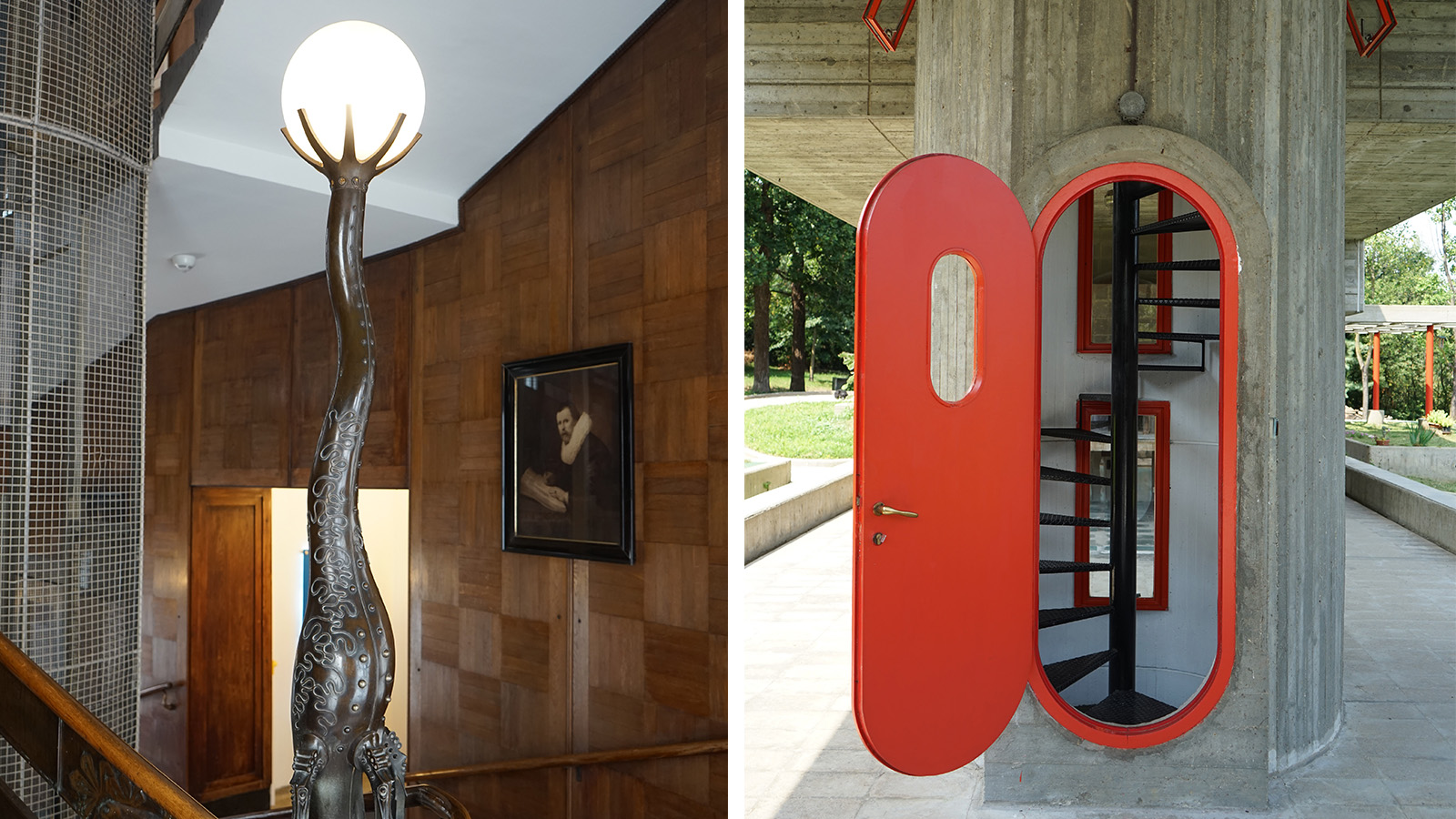 Postcard from Vienna Design Week 2024, a festival with a nomadic spirit
Postcard from Vienna Design Week 2024, a festival with a nomadic spiritThe Austrian capital hosts one of the more interesting design fairs on the circuit. Here’s what happened at Vienna Design Week 2024